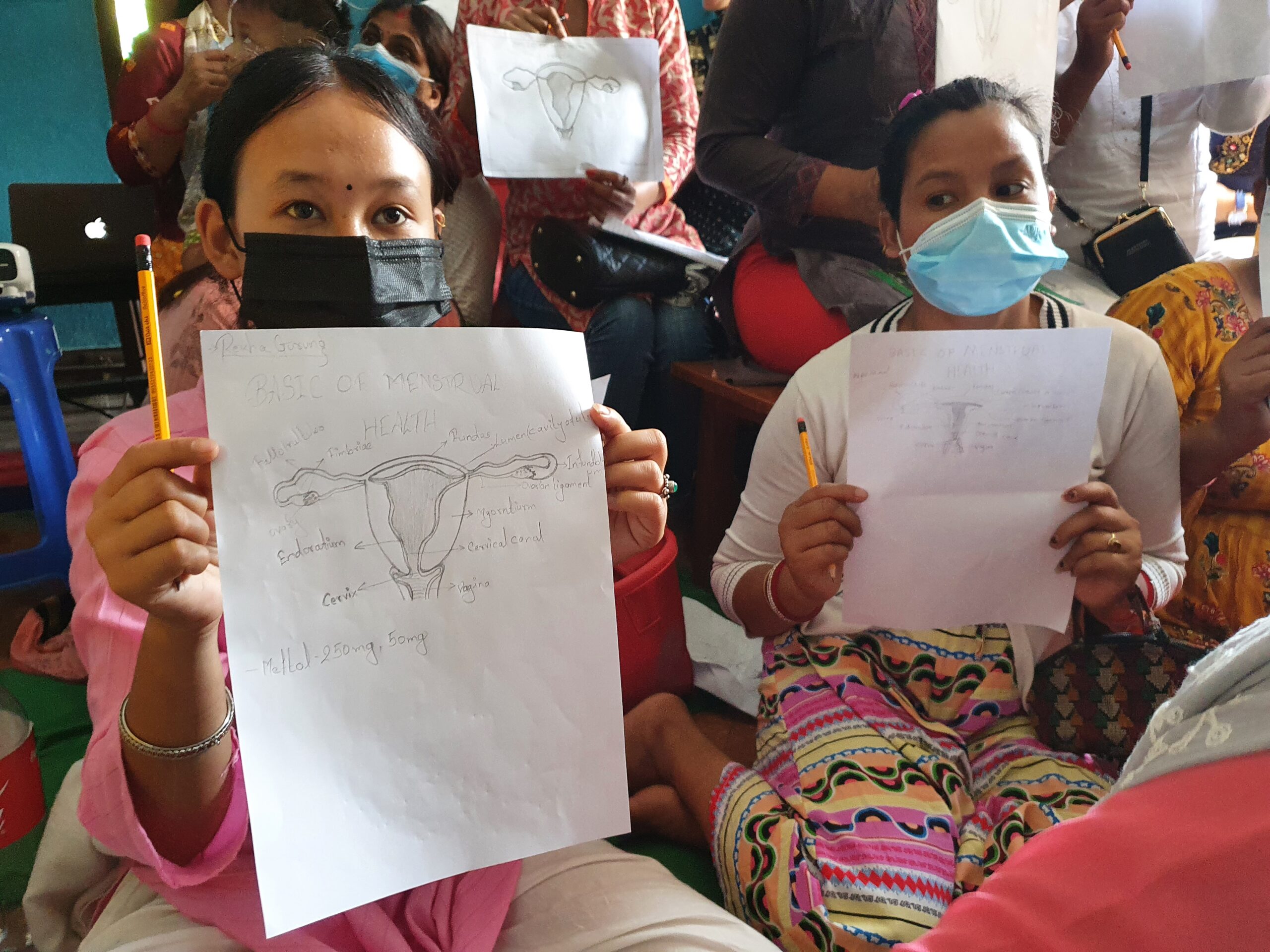Around 23 women sit in narrow rows in the Narighar and wait patiently until Dr. Mingma Sherpa arrives, the projector is installed and everything is ready.
Hygiene around menstruation is the topic today. Dr. Mingma Sherpa starts from scratch knowingly. What does a uterus look like? What functions do the individual parts have? Why and how is there a menstrual period at all? Which cycle lengths are considered normal and what can we do about the tedious side effects of the menstruation?
Soon, the dedicated doctor also addresses some important taboo topics. Women are not dirty and unclean during their period and can easily enter a kitchen. A lively discussion arises when the topic of “religion and menstruation” is addressed. In Nepal, menstruating women are not allowed to enter a temple or perform prayers. All women in the room know these outdated rules from their own experience.
The correct handling of sanitary pads is discussed and the advantages and disadvantages of purchased pads versus reusable fabric pads are also explained. The fabric pads perform significantly better in the context of Nepal. They are inexpensive, efficient and produce no waste.
Finally, Dr. Sherpa has the women draw an uterus. The results are impressive and everyone leaves Narighar after an extended Q&A session with valuable insights: The period is something positive and a sign that we are healthy.






